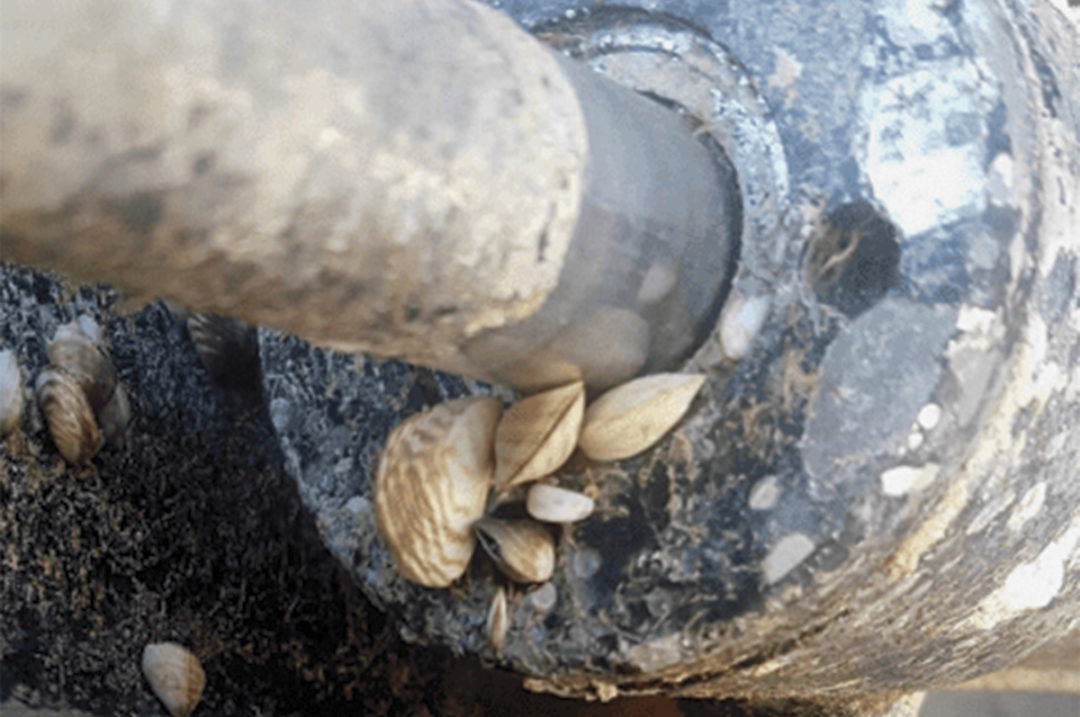“We’ve been preparing for this for a long time – since 2008,” says Michael Stephenson, senior biologist for Idaho Power Company, regarding Idaho’s response to the September 2023 discovery of quagga mussels in the Snake River in Twin Falls.
Quagga mussels are bivalve mollusks proving highly invasive in western Europe and North America. They are native to Ukraine’s Dnieper River drainage, which joins the Black Sea near the Crimean Peninsula. They were discovered in the Great Lakes in the late 1980s, presumably having hitched a ride in ship ballasts. “Since then,” says Idaho State Department of Agriculture's (ISDA) Invasive Species Bureau Chief Nicholas Zurfluh, “they’ve been moving across North America on watercraft and water-related equipment.”
In response, he says, the states of the Pacific Northwest have put a big effort into inspecting for quagga and closely related zebra mussels hitching a ride on watercraft transported overland. “We’ve been inspecting boats for 15 years now,” says Zurfluh. Idaho has inspected over 1 million boats in that time – over 100,000 in 2023 alone.
“With that, we also have a monitoring program in Idaho waters that’s been going on for 14 years,” he says. Monitoring season begins when water temperatures rise to about 53⁰F, as quagga mussel’s optimum temperatures for reproduction are 57ºF to 75⁰F. State employees do much of this monitoring, in cooperation with tribes, cities and Idaho Power.
Quagga mussels in the Snake
One aspect of the monitoring plan includes collecting water samples that may contain swimming larvae called veligers. Samples are examined under a microscope using polarizing filters. Under cross-polarized light, says Zurfluh, “quagga and zebra mussels have a distinctive X pattern on the shell.”
Last fall, routine sampling in the Middle Snake revealed suspicious veligers. The next step was DNA testing to confirm the species. “We needed verification,” says Zurfluh. “With a species with this high of a profile, you really need to know what you’re talking about before you ring the bell.”
On Monday, Sept. 18, he says, “We had all the information we needed to communicate detection.” On Tuesday, ISDA staff was onsite and setting communications, containment and treatment tracks in motion according to the general plan developed years ago.
Although veligers turned up in three “plumes” within 6 river miles between Twin Falls Hydroelectric Dam and Pillar Falls, divers considered themselves fortunate to locate one adult quagga mussel amid the algae and sediment below Shoshone Falls. “We believe it was a 2-year-old, which is the first year it would have been of spawning age,” says Zurfluh. The adult mussel was enclosed with netting and left in place to serve as an indicator of treatment success.

Tom Moorehouse of Clean Lakes Inc. measures the copper sulfate product Natrix during quagga mussel treatment in the Snake River near Twin Falls in September 2023. Photo courtesy of ISDA.
Public involvement
As ISDA explored response options, they consulted various stakeholders – “all managers associated with the Middle Snake,” says Zurfluh. “Everybody was in favor of the treatment, so then we went out to the community.”
“Frankly, when you hear that you have quagga mussels in your river, it terrifies water managers,” says Idaho Water Users Association Executive Director and General Council Paul Arrington. “An established population would increase cost, workload and burden in general.”
“We’ve seen what they’ve done in the lower Colorado,” says Stephenson of the impact on hydroelectric structures. “It’s unpredictable. We’re confident we can keep the lights on, but it’s a question of what hiccups we’ll meet along the way – and what’s the cost.”
 With 40% of Idaho Power’s energy portfolio driven by hydropower facilities and about 2 million irrigated acres on the Snake River Plain serviced by canals, the implications of a quagga mussel infestation – and the costs of mitigation – are far-reaching for Idaho energy and food production far beyond the initial site.
With 40% of Idaho Power’s energy portfolio driven by hydropower facilities and about 2 million irrigated acres on the Snake River Plain serviced by canals, the implications of a quagga mussel infestation – and the costs of mitigation – are far-reaching for Idaho energy and food production far beyond the initial site.
“It would affect stretches both up and downriver, and all uses,” says Arrington. “It could be overcome … but only at significant cost of both money and manpower.”
The environmental impact was also a consideration. “Quagga mussel is a filter feeder and it is very good at it,” says Zurfluh. Although treatment had substantial immediate local impact on non-target aquatic animals like fish, stakeholders considered these preferable to long-term competition for food and space along the full length of the Snake River and connected waterways.
Treatment
When all the pieces came together for treatment, a copper sulfate product called Natrix was applied in three locations in the Snake River. “It’s a product similar to something our users have used,” says Arrington.
One of the treatment areas – between Shoshone Falls and Pillar Falls – was inaccessible by boat. Managers helicoptered two survey boats into this stretch and retrofitted them for treatment.
They also worked with Idaho Power for access to the river. “They ran the treatment through our power plants at Shoshone Falls and Twin Falls,” says Stephenson. “Those areas are difficult to access, and this allowed us to make sure we weren’t a source of contamination.”
From treatment boats, crews added enough Natrix to bring the river water up to the target concentration, then worked in shifts to maintain that concentration constantly for 96 hours. “It was kind of like running calving out heifers and haying at the same time,” says Zurfluh of the long hours and labor demand.
After the 96-hour treatment, protocol required a 48-hour rest before another 96-hour treatment upstream. Then post-treatment monitoring began. “The product dissipated and diluted as anticipated,” says Zurfluh. “It did what we wanted it to do, with no significant downstream effects.”
Besides monitoring the copper sulfate concentration, crews also monitored quagga mussel response. They verified that the treatment had killed the known adult mussel and found several empty veliger shells in water samples.
“We are cautiously optimistic that we caught it and that treatment was successful,” says Zurfluh. “However, we need to go five years of continuous, extensive monitoring before we can claim success and remove this area from the infested list.”
In the meantime, water users will be preparing for the worst. Idaho Power, for example, is emphasizing plant vulnerability assessments, ensuring field employee familiarity with risks and reaction plans, and making sure protocols for decontaminating equipment and boats are consistent and effective. “If they haven’t established for real yet, the threat is continuous,” says Stephenson.








